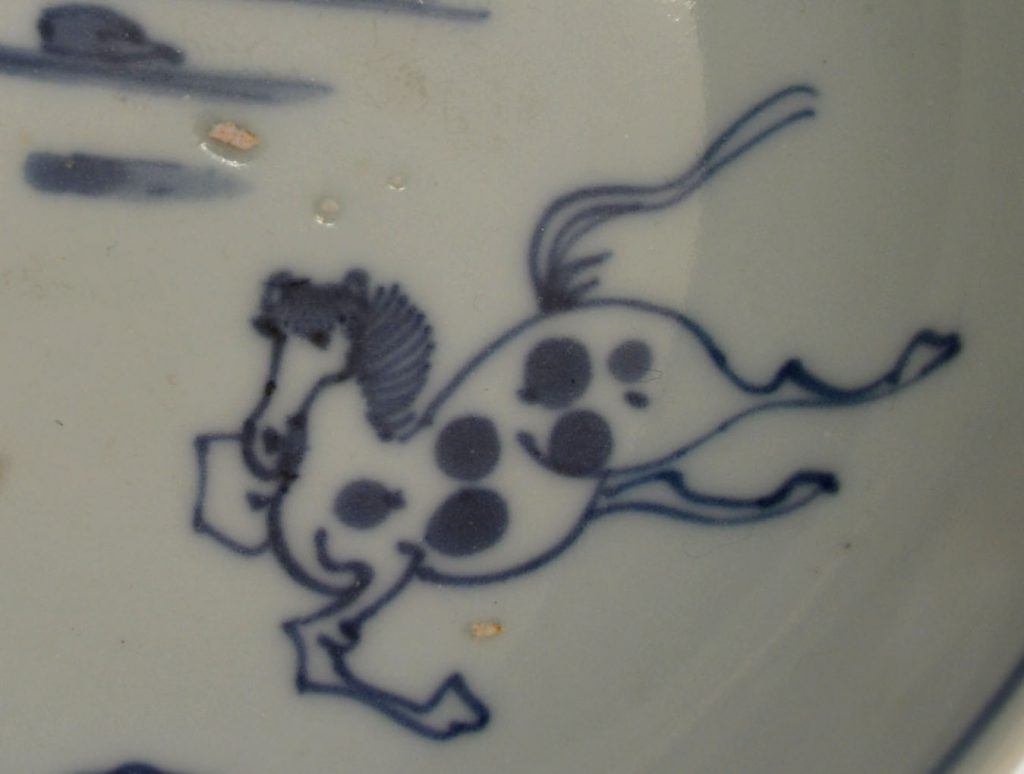
Ming Porcelain Dish for the Japanese Market c.1625 – 1635.
A Transitional Porcelain Ko-Sometsuke Bowl, late Ming Dynasty, Tianqi period 1621-1627 or early Chongzhen, c.1625-1635. The shallow 17th century Chinese bowl is decorated with two prancing horses in a landscape in the foreground, the background consists of buildings with a flag perched on top of a rocky outcrop.
SOLD
- Condition
- very good, minor fritting.
- Size
- Diameter : 14.5 cm (5 3/8 inches)
- Provenance
- N/A
- Stock number
- 24514
- References
- For a Ming blue and white porcelain dish with this design from the Butler Family Collection see : Trade and Transformation, Jingdezhen Porcelain for Japan, 1620-1645 (Julia B.Curtis, China Institute Gallery, New York 2006) page 78, plate 54.
Information
Julia Curtis mentions in 'Trade and Transformation, Jingdezhen Porcelain for Japan, 1620-1645 ' (see references) that "In China the galloping horse is emblematic of speed and endurance and also symbolises strength and courage. In the Shinto religion of Japan, the horse was able to carry messages between heaven and earth".
Ko-Sometsuke :
Ko-Sometsuke, meaning `Old Blue and White` is a term used to describe Chinese blue and white porcelain made for Japan. This late Ming porcelain was made from the Wanli period (1573-1620) and ended in the Chongzhen period (1628-1644), the main period of production being the 1620`s and 1630`s. The porcelain objects produced were made especially for the Japanese market, both the shapes and the designs were tailored to Japanese taste, the production process too allowed for Japanese aesthetics to be included in the finished object. Its seams firing faults were added, repaired tears in the leather-hard body were too frequent to not, in some cases, be deliberate. These imperfections as well as the fritting Mushikui (insect-nibbled) rims and kiln grit on the footrims all added to the Japanese aesthetic. The shapes created were often expressly made for the Japanese tea ceremony meal, the Kaiseki, small dishes for serving food at the tea ceremony are the most commonly encountered form. Designs, presumably taken from Japanese drawings sent to China, are very varied, often using large amount of the white porcelain contrasting well with the asymmetry of the design.



